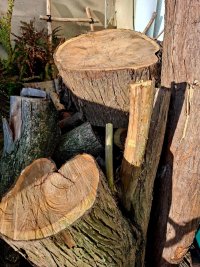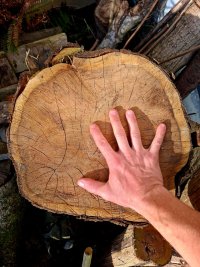A nice lady offered me some big old chunks of yew the other day.
I've carved a few smaller bits before, and it's a nice wood to work with. I'm looking at these larger pieces and wondering what they might become.
Would it be dodgy to carve a few utensils/bowls/other items that may be used in contact with dry food? Have there been any cases where ill effects have been caused by using well seasoned yew for such things?
Thanks.


I've carved a few smaller bits before, and it's a nice wood to work with. I'm looking at these larger pieces and wondering what they might become.
Would it be dodgy to carve a few utensils/bowls/other items that may be used in contact with dry food? Have there been any cases where ill effects have been caused by using well seasoned yew for such things?
Thanks.


